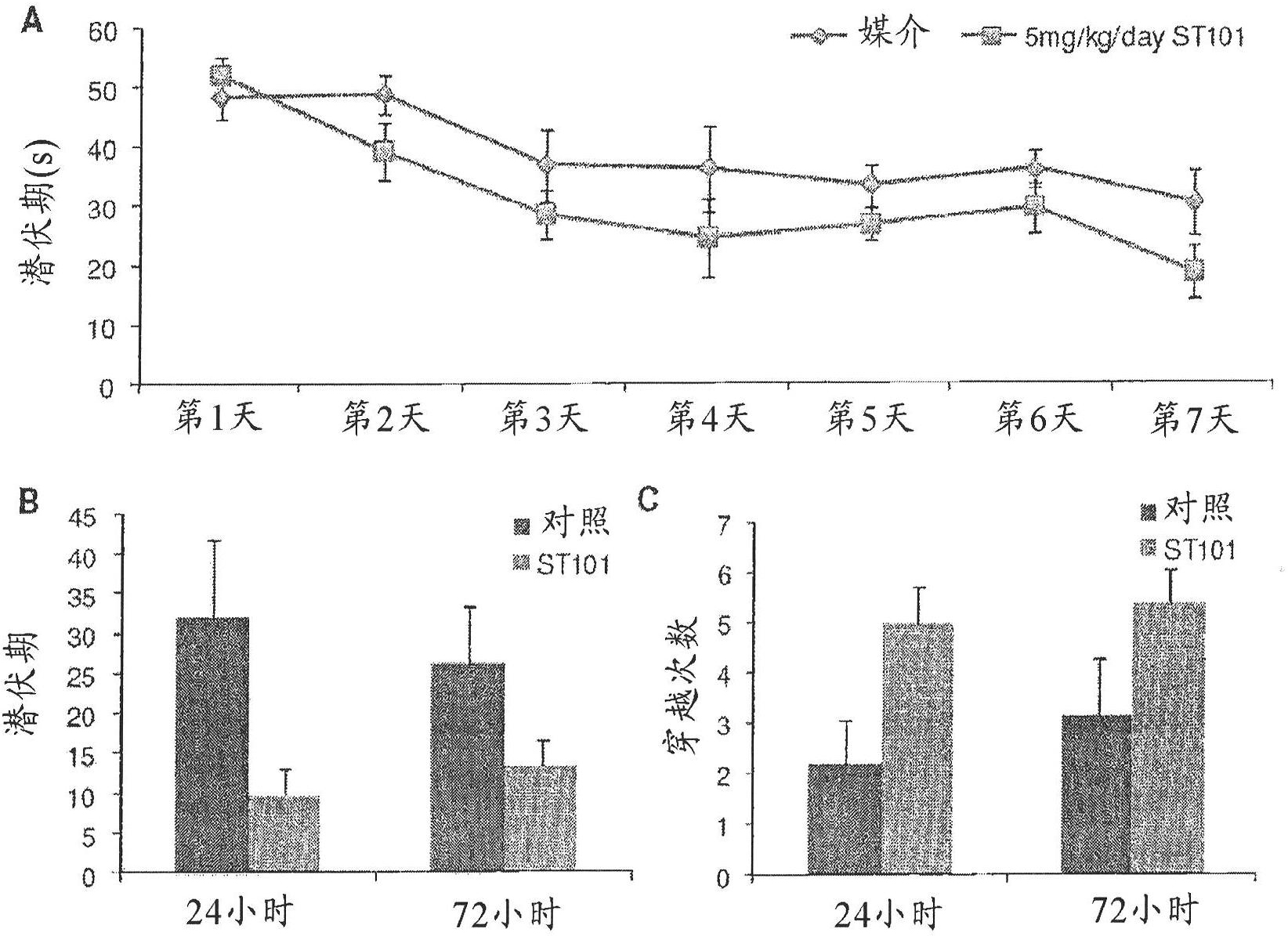Method of decreasing ubiquitylated protein levels
A technology of hydrates and halogen atoms, applied in organic chemistry, pharmaceutical formulations, medical preparations containing active ingredients, etc., can solve problems such as inefficiency
- Summary
- Abstract
- Description
- Claims
- Application Information
AI Technical Summary
Problems solved by technology
Method used
Image
Examples
Embodiment 1
[0525] In vitro effect of ST101 on β-amyloid in neuronal 2a cultured cells
[0526] Neuro 2a is a murine neuroblastoma cell line known to produce the amyloid peptide Aβ in detectable amounts by ELISA assay 1-40 and Aβ 1-42 . These forms of Aβ have been associated with pathology in the AD brain, and it is specifically assumed that Aβ 1-42 Has the ability to block alpha 7 nicotine receptors and produce direct neurotoxic effects. Neuro2a cells were treated with ST101 added to tissue culture medium for 24 hours. Tissue culture media was harvested and analyzed by ELISA for the presence of Aβ.
[0527] attached figure 1 A and 1B are bar graphs depicting the effect of compound ST101 on Aβ production by Neuro 2a cells. figure 1 A is a bar graph depicting Aβ concentration in cell culture media as a function of ST101 concentration compared to control. figure 1 B depicts Aβ as a function of ST101 concentration compared to control 1-42 with Aβ 1-40 A bar graph of the ratio. as i...
Embodiment 2
[0529] Effect of ST101 on 3×Tg-AD mice in Morris water maze
[0530] The laboratory of Dr. Frank LaFerla at UC Irvine has developed transgenic mice containing 3 mutations associated with Alzheimer's pathology (βAPPSwe, PS1M146V, and τP301L) (Oddo et al., "Triple-transgenic model of AD with plaques and tangles: intracellular Aβ and synaptic dysfunction (A three-part transgenic model of AD with plaques and tangles: intracellular Aβ and synaptic dysfunction), Neuron 39(3):409-21 (2003)). These mutations switch APP cleavage from α-secretase to β-secretase, increasing Aβ 1-42 The generation of τ accumulates into double helical filaments. 3×Tg-AD animals developed the requisite features of AD in an age-dependent fashion with deficits in memory-related behavioral functions, plaque and tangle pathology, and synaptic dysfunction, which included deficits in long-term potentiation, which Activity considered to be critical for memory (Oddo et al., 2003). Furthermore, plaque formation p...
Embodiment 3
[0539] Effect of ST101 on Aβ in brain tissues derived from 3×Tg mice-AD
[0540] Biochemical implications: ST101 and the amyloid processing pathway
[0541] At the end of the 2-month treatment period, 3xTg mice were sacrificed and brain tissue processed. In the first assay, soluble Aβ was quantified by ELISA 1-40 and Aβ 1-42 and insoluble Aβ (after formic acid extraction). Soluble Aβ indicates protein that has been processed and released from full-length APP. Insoluble Aβ represents the fibrillar accumulations that eventually settle in amyloid plaques.
[0542] image 3 A and 3B are bar graphs depicting the effect of ST101 on Aβ in brain tissue derived from 3xTg mice-AD. image 3 A depicts soluble Aβ in the brain tissue of ST101-treated mice relative to control mice 1-40 and Aβ 1-42 amount. image 3 B depicts insoluble Aβ in mice treated with ST101 relative to control mice 1-40 and Aβ 1-42 A bar graph of the amount of (formic acid extraction). One animal in the ST1...
PUM
 Login to View More
Login to View More Abstract
Description
Claims
Application Information
 Login to View More
Login to View More - R&D
- Intellectual Property
- Life Sciences
- Materials
- Tech Scout
- Unparalleled Data Quality
- Higher Quality Content
- 60% Fewer Hallucinations
Browse by: Latest US Patents, China's latest patents, Technical Efficacy Thesaurus, Application Domain, Technology Topic, Popular Technical Reports.
© 2025 PatSnap. All rights reserved.Legal|Privacy policy|Modern Slavery Act Transparency Statement|Sitemap|About US| Contact US: help@patsnap.com



